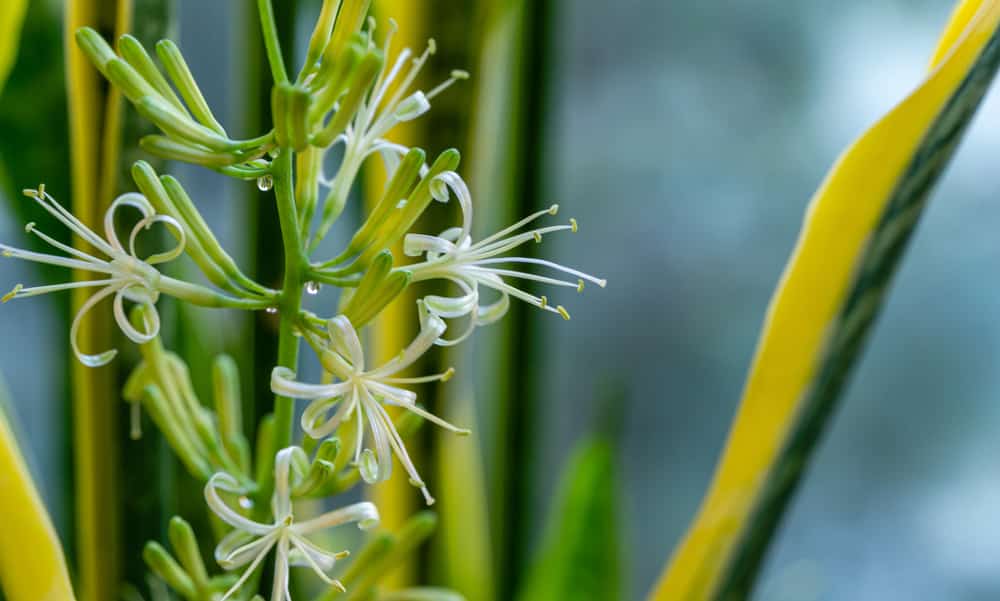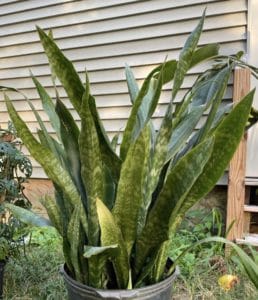Snake plants, or Mother-in-Law’s Tongue, are popular houseplants prized for their hearty, forgiving nature and easy care. Their striking leaf patterns and tall, upright growth habit make them a focal point in any room. And with a bit of care, snake plants can thrive for many years, making them an excellent choice for novice and experienced growers alike.
But what about light? Do snake plants need light? Let’s find out.
Do Snake Plants Need Light?
If you’re ready to add a snake plant to your home, you might wonder how much light your new housemate needs. Great news! These versatile beauties can do well in a wide range of lighting conditions, from bright, direct sun to low-light situations.
When determining the right spot for your snake plant, consider where they originated. These plants are native to southern Africa, which experiences both sub-tropical and temperate climates. As a result, snake plants need similar conditions to thrive – bright light, well-draining soil, and warmer temperatures.
Planting Snake Plants Indoors
Snake plants will usually do best in bright, indirect light. This means they’ll do well near a south- or west-facing window. But if you don’t have a spot that gets bright light, don’t worry – snake plants can also do well in low-light areas, although they won’t grow as quickly. And be sure to keep them away from drafty windows in the winter to avoid any temperature drops.
Before planting snake plants indoors, choose a pot slightly larger than the root ball. Snake plants have shallow roots, so they do not need a deep pot. Then select a well-draining potting mix, such as one designed for cacti and succulents, as these plants don’t like having wet feet.
Planting Snake Plants Outdoors
If you live in USDA zones 9 to 11, snake plants can also be planted outdoors. They’ll do best in a spot that receives bright, indirect light but can tolerate some direct sun – just introduce them slowly to avoid shocking the plant. If you live somewhere with scorching summers, provide some afternoon shade to protect your snake plant from the harsh midday sun.
Choose an area that drains well when planting snake plants outdoors. Ensure the selected location is not prone to puddling or flooding. If necessary, improve drainage by mixing some organic matter, like compost or shredded leaves, into the soil before planting. Vermiculite or perlite are also common additions to improve drainage.
Watering Snake Plants
The biggest challenge to keeping snake plants is watering them properly. These plants are very drought-tolerant and do not like to be overwatered. In fact, too much water is one of the most common reasons snake plants die. However, this doesn’t mean you should forgo watering your plant. These plants still need some moisture to thrive; however, how much they require depends on how much light they receive.
In general, indoor snake plants should be watered every 2 to 8 weeks, depending on the amount of light, type of soil, and humidity level in your home. Always allow the top couple inches of soil to dry out completely between waterings. During the winter months, you can cut back on watering; once every 8 weeks should be sufficient.
For outdoor snake plants, water every 10 to 14 days or as needed to keep the soil moist but not soggy. You may need to water more often in areas with higher temperatures and low humidity. Be sure to check the ground before watering – if it’s still moist, hold off until it has dried out. And as the temperatures start to cool in the fall and winter, you can reduce watering to every 2 weeks or monthly.
Final Verdict
With their forgiving nature and easy-care requirements, snake plants are ideal for beginners. But do snake plants need light? Whether you’re planting them indoors or out, choose a spot with bright light and well-draining soil for the best results.
If you can’t find a well-lit location, snake plants will do fine in low-light areas – just water them less and don’t expect them to grow as quickly. With the right care a snake plant can produce flowers. Happy planting!


